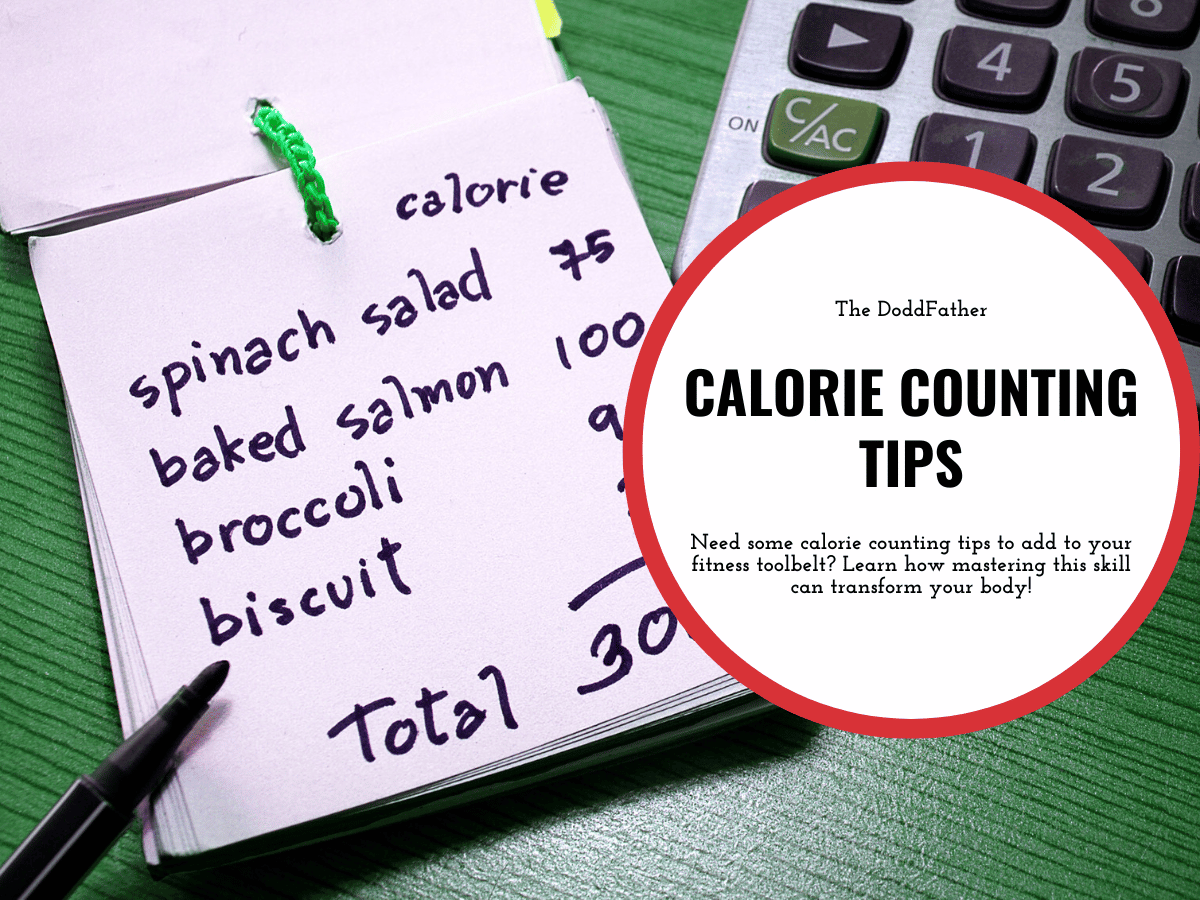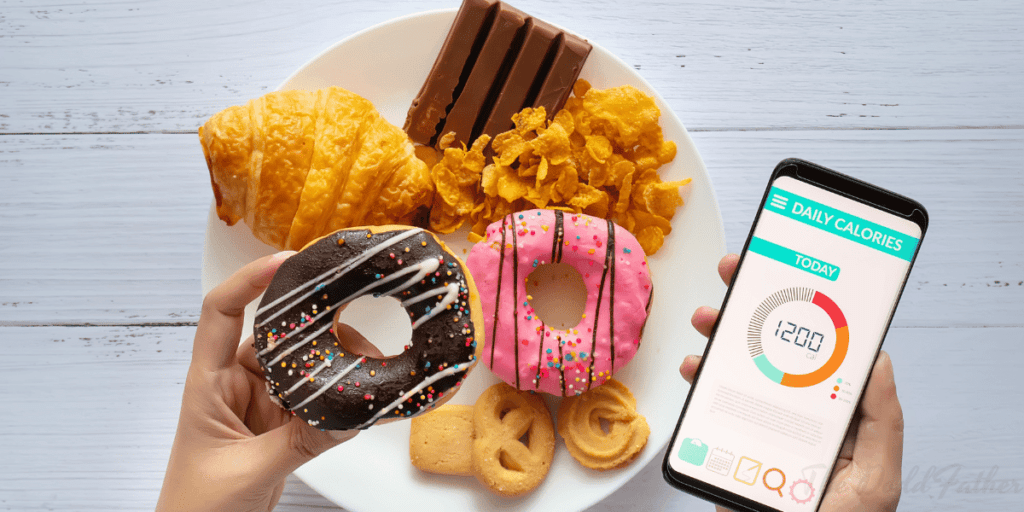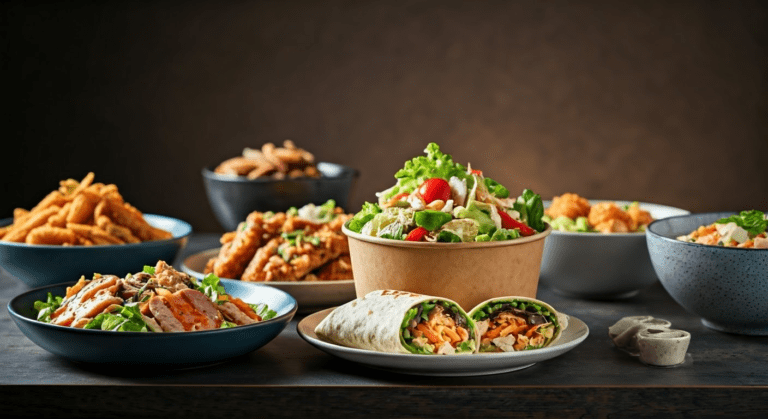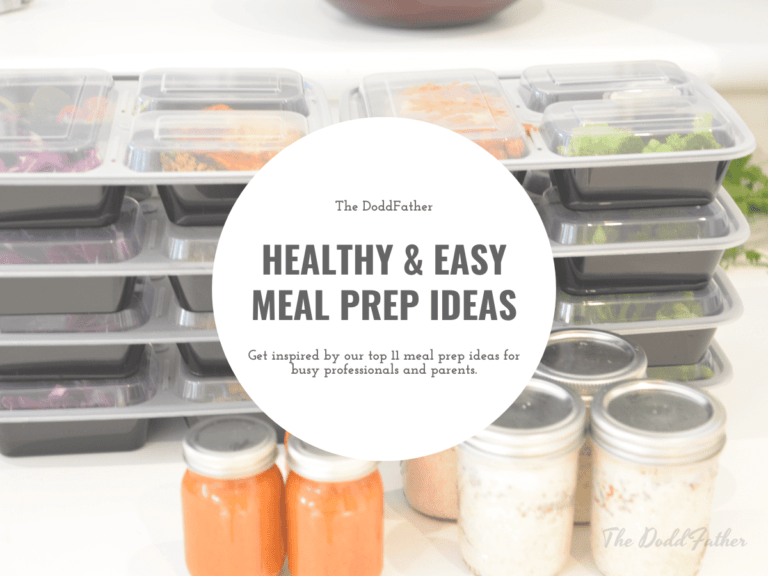
Cody Dodd is a NASM-certified personal trainer and Navy Command Fitness Leader who uses his fitness expertise to write fitness content for The DoddFather. Cody has transformed his physique and confidence by understanding the principles of exercise and fitness.
It all started with a radical fat loss of 55 pounds. From 225 to 170. From a kid who once couldn’t do a pull up, to knocking out 20 pullups in a Navy command competition while floating in the middle of the ocean.
He has a diverse writing and editing background that’s primarily focused on health and fitness, Navy life, and dad life. His work has been featured in Good Dads, as well as Platform Launchers, and Daddying.
Ever heard the phrase “calories in, calories out” and wondered what all the fuss is about? Well, buckle up, because we’re about to dive into the fascinating world of calorie counting!
Did you know that a researcher once lost 27 pounds in two months eating nothing but Twinkies, Doritos, and sugary cereals? Yep, you read that right! It’s all about the numbers, folks. So, let’s break down this “magical” concept and discover calorie counting tips that work for you!
What’s the Deal with Calories, Anyway?
Okay, so, calories. You hear about them all the time, right? “This food has X calories,” or “I burned Y calories at the gym today.” But what does it all really mean?
Definition of Calorie
Think of a calorie like a tiny unit of energy. It’s the amount of heat needed to raise the temperature of one gram of water by one degree Celsius. Yeah, I know, it sounds a bit science-y, but bear with me.
Basically, our bodies need these little energy packets – calories – to function. We get them from the food we eat and then burn them off through our daily activities, even just breathing!
Basal Metabolic Rate
Everyone has a unique ‘calorie burn rate’, even when you’re just chilling on the couch. This is called your Basal Metabolic Rate, or BMR for short.
It’s like your body’s internal engine, constantly ticking away, using energy to keep your heart beating, your lungs breathing, and all that good stuff. Your BMR depends on a bunch of things, like your age, gender, muscle mass, and even your genes.
Concept of Calorie Deficit for Weight Loss
If you eat the exact number of calories your body burns each day, your weight stays pretty much the same. But, if you want to lose weight, you need to create a calorie deficit.
This means you’re taking in fewer calories than your body needs, forcing it to tap into its fat stores for extra energy. It’s like dipping into your savings account when you’re a bit short on cash.
How Activity Levels Influence Daily Calorie Requirements
But hold on, it’s not all about cutting calories. The more active you are, the more calories you burn. So, if you’re hitting the gym or going for a run, your body needs more fuel to keep up. It’s like revving up your car engine – you need more gas to go faster.
It’s all about finding the right balance between the energy you take in and the energy you burn. It might sound a bit complicated at first, but trust me, once you get the hang of it, it’s really not that bad. And hey, if I can figure it out, anyone can!
Cracking the Calorie Counting Code – Calorie Counting Tips
Okay, let’s get real about calorie counting. At first, it feels like you’re deciphering some ancient scroll. It can be stressful for a lot of people.
There are apps, food scales, and endless debates about macros. It can be overwhelming. I remember when I first started, I spent hours meticulously logging every single almond(or M&M) I ate. Talk about a rabbit hole!
With the help of a few calorie counting tips, you can push past the stigma and use this knowledge to your advantage.
Tools and apps for tracking calories
Thankfully, there are some fantastic tools out there to make life easier. MyFitnessPal was my best friend at one time. It has a massive food database, so logging meals is a breeze. I also love that it syncs with my fitness tracker, giving me a complete picture of my calorie intake and expenditure.
My current best friend is My Macros+, and let me tell you why. This app allows you to track your calories with no internet connection. This became the single most important thing to me once I joined the Navy and started going on deployments. You can access the food database, create custom food entries, and adjust your goals offline!
MacroFactor is another popular option, and it has some cool features like barcode scanning and recipe building.
Here is a list of some of the more popular options:
- MacroFactor
- RP Hypertrophy
- MyFitnessPal
- VeSync
- My Macros+(Apple exclusive)
Tips for accurately measuring and logging food intake
Let’s be honest, even with the best apps, accuracy is key. I used to eyeball portions, and boy, was I way off! Investing in a food scale was a game-changer.
It takes the guesswork out of portion sizes, especially for things like nuts, cheese, and pasta, which are easy to overeat. And don’t forget about hidden calories in drinks, condiments, oils, and butter. That splash of cream in your coffee or dollop of mayo on your sandwich adds up!
Common pitfalls to avoid when counting calories
Now, let’s talk about those sneaky calorie traps. Eating out can be a minefield. Restaurant portions are often massive, and it’s hard to know exactly what’s in those dishes.
My advice? Don’t be afraid to ask questions and make modifications. Most places are happy to accommodate. And watch out for those “healthy” snacks that are actually calorie bombs. Just because something is labeled “low-fat” or “gluten-free” doesn’t mean it’s low in calories.
Pro Tip – Ask for a to-go box when you order your food. You can put half of your food in the to-go container right away, ensuring you don’t overeat and ruin your calorie deficit.
The importance of consistency in tracking
Consistency is king. There will be days when you forget to log a snack or underestimate a portion. It happens to the best of us. But don’t let those slip-ups derail you.
The key is to get back on track and keep going. Remember, calorie counting is a tool, not a punishment. It’s about creating awareness and making informed choices, not obsessing over every bite.
This journey is about progress, not perfection.
Delicious Swaps: Having Your Cake and Eating It Too!

I can’t tell you how many times I’ve started a diet only to find myself staring longingly at the dessert menu or raiding the snack cupboard at 3 a.m. (Anyone else relate to the late-night snack attack struggle? Just me?).
The good news is, you don’t have to deprive yourself to see those numbers on the scale go down. It’s all about finding smarter swaps that satisfy those cravings without sabotaging your progress.
Low-Calorie Alternatives to Popular Junk Foods
Okay, let’s be honest. We all have those go-to junk foods that we swear we could never give up. But hold on – before you throw in the towel, hear me out. There are some seriously good low-calorie alternatives out there that’ll surprise you.
Take Quest chips, for example. I used to inhale a whole bag of regular chips in one sitting. But then I discovered Quest protein chips. They have way fewer calories and a good amount of protein to keep you feeling full.
Same goes for Legendary donuts. Or Anabar Reeses flavored protein bars. They’re a lifesaver when that mid-afternoon slump hits and you’re craving something sweet.
The key is to experiment and find what you enjoy. Don’t be afraid to try different brands and flavors until you find your perfect match. The options available today are mind-blowing. Legendary brownies were not a thing when I began my journey into fitness.
Homemade Recipes for Healthier Versions of Favorite Treats
Now, if you’re feeling a bit more adventurous, why not whip up some healthier versions of your favorite treats at home? There are tons of recipes online for everything from protein brownies to low-calorie ice cream.
I’ve tried my fair share of recipes, and I’ve had some hits and misses. But let me tell you, there’s nothing quite like the satisfaction of biting into a delicious treat that you made yourself – and knowing it’s not going to completely derail your calorie goals.
My favorite homemade low-calorie, high-protein alternative is “Anabolic French Toast.” Greg Doucette and Will Tennyson first introduced me to this. I found a nice recipe on Reddit.

The Scoop on Halo Top and Other “Healthier” Ice Cream Options
Let’s talk about ice cream. It’s my ultimate weakness. But instead of completely banning it from my life, I’ve found some healthier options that hit the spot without the guilt.
Halo Top is a popular one, and for good reason. It’s low in calories and high in protein. I can confidently eat one serving(1/3 cup) for about 100 calories – or I can go all out and eat a whole pint for 300-400 calories. not bad, when you consider that one serving of Haagen-Dazs or Ben & Jerry’s ice cream can be 300-400 calories.
But don’t stop there! There are plenty of other brands like Enlightened and Arctic Zero that are worth checking out. Just remember to read the labels carefully. Some “healthier” ice creams can still be high in sugar or fat, so it’s important to choose wisely.
Balancing Occasional Indulgences with Overall Calorie Goals
I’m not going to tell you to never eat your favorite foods again. That’s just not realistic. It’s all about balance. If you want a slice of pizza or a piece of cake, go for it! Just make sure you’re mindful of your overall calorie intake for the day.
A calorie counting tip I like to incorporate is to have a protein bomb if I know I will be going out to eat later. A protein bomb is essentially a meal with an abundance of protein and low calories. This ensures you get your protein needs for a low-calorie cost and can enjoy yourself in moderation when you go out to eat with family, friends, or colleagues.
One indulgence isn’t going to ruin your progress. It’s what you do consistently that matters. In other words, being good most of the time! So don’t beat yourself up if you slip up every now and then. Just get back on track and keep moving forward!
Beyond the Numbers: Making Calorie Counting Work for You
Calorie counting isn’t just about the numbers – it’s about understanding your body, your habits, and finding a sustainable way to reach your goals. Make the formula work for you.
After you’ve spent some time getting a handle on what a tablespoon of peanut butter looks like, or what a cup of cereal looks like, this stuff will become intuitive. I believe it is essential to spend some time using a food scale and tracking everything for the intuitive approach to work properly.
Personalizing Your Approach to Fit Your Lifestyle
One of the biggest mistakes I made early on was trying to force myself into a rigid eating plan. I’d see all these fancy diets online and think, “That’s what I need to do!” But the truth is, what works for one person might not work for another.
I had to learn to listen to my body and figure out what made me feel good. Maybe you’re a morning person who loves a big breakfast, or maybe you prefer to graze throughout the day. There’s no right or wrong way to do it, as long as you’re staying within your calorie goals.
Combining Calorie Counting with Other Diet Strategies (e.g., OMAD, Low-Carb)
I’ve also experimented with combining calorie counting with other diet strategies, like intermittent fasting or a low-carb approach. For a while, I tried OMAD (One Meal A Day), and it was surprisingly doable. The first few days were hell, though.
But I eventually realized that it wasn’t sustainable for me in the long run. I missed the social aspect of eating with friends and family. So, I switched to a more flexible approach, focusing on low-carb high protein meals while still allowing myself the occasional treat. The key is to find what works for you and stick with it.
The Importance of Nutrient Density, Not Just Calorie Quantity
Another important lesson I learned is that not all calories are created equal. Sure, a 100-calorie pack of cookies and a 100-calorie serving of broccoli might have the same number of calories, but they’ll have vastly different effects on your body.
I used to focus solely on hitting my calorie target, but I wasn’t feeling my best. Once I started prioritizing nutrient-dense foods like fruits, vegetables, and lean proteins, I noticed a huge difference in my energy levels and overall well-being. It’s not just about the quantity of calories, but the quality too.
Dealing with Setbacks and Maintaining a Long-Term Perspective
Let’s be real, there will be days when you slip up. Maybe you overindulge at a party or have a stressful day and reach for the comfort food. It happens to the best of us. But the important thing is to not beat yourself up about it.
Just acknowledge it, learn from it, and move on. Remember, this is a journey, not a race. It’s about making sustainable changes that you can stick with for the long haul. So, don’t get discouraged by setbacks. Keep your eye on the prize and celebrate your progress along the way.
Share your progress photos with someone else if need be. If you’re like me, you are your biggest critic. You might look at a shirtless picture of yourself and immediately focus on your flaws. Your eyes might dart straight to the little bit of love handle that you wish wasn’t there.
An outsider can look at these photos from an unbiased perspective and tell you what they see. Who knows, maybe you look the exact same. But odds are, after weeks of eating within your calorie deficit range, you will have dropped body fat that may be harder for you to see.
Calorie Counting Myths: Busted!
There’s a ton of misinformation out there about calorie counting that can make the whole thing seem way more complicated—or even scary—than it needs to be. I’ve fallen for a few of these myself over the years, and trust me, they can really mess with your head.
The truth about “starvation mode” and metabolism
One of the biggest myths is the whole “starvation mode” thing. You know, the idea that if you eat too little, your body will freak out and start clinging to every calorie.
While it’s true that severe calorie restriction can slow your metabolism down a bit, it’s usually not enough to completely derail your weight loss efforts. Our bodies are smarter than we give them credit for, and they can adapt to changes in calorie intake without going into full-on survival mode.
Why all calories are not created equal (but still count)
Another myth is that all calories are created equal. You’ll hear people say things like, “A calorie is a calorie,” but that’s not the whole story. The type of food you eat can definitely affect how your body processes those calories. For example, protein takes more energy to digest than carbs or fat, which means you burn more calories just by eating it.
And let’s not forget about the importance of nutrients. A 100-calorie candy bar might technically have the same number of calories as a 100-calorie apple, but the apple is packed with vitamins, minerals, and fiber that your body needs to function properly.
So, while all calories do count when it comes to weight loss, it’s important to focus on getting those calories from nutrient-dense foods that will keep you feeling full and satisfied.
The role of exercise in calorie counting and weight loss
There’s the myth that exercise is the key to weight loss. Have you ever heard the saying “muscles are built in the gym, abs are built in the kitchen”? This might not be an absolute truth, but it is mostly right and it can steer the vast majority of people in the right direction.
While exercise is definitely important for overall health and can help you burn more calories, it’s not the only factor to consider. You can’t out-exercise a bad diet. If you’re consuming more calories than you’re burning, even the most intense workout routine won’t magically make the pounds disappear.
That being said, exercise can definitely give you a boost and make it easier to create a calorie deficit. Plus, it has tons of other benefits, like improving your mood, reducing stress, and boosting your energy levels. So, don’t skip the gym, but don’t rely on it as your sole weight loss strategy either.
Conclusion
And there you have it, friends – the ins and outs of calorie counting! All of the calorie counting tips & tricks in my arsenal that can help you achieve the body that you feel comfortable in.
This journey is all about finding what works for you. Maybe you’ll be counting every calorie with precision, or perhaps you’ll just use these principles as a general guide. Whatever path you choose, know that small, consistent efforts add up over time.
So, are you ready to play the numbers game and take control of your health in 2024? Give calorie counting a shot, and who knows – you might just surprise yourself with the results! Stay positive, be patient with yourself, and don’t forget to enjoy the ride. Life’s too short not to savor every (carefully counted) bite!


